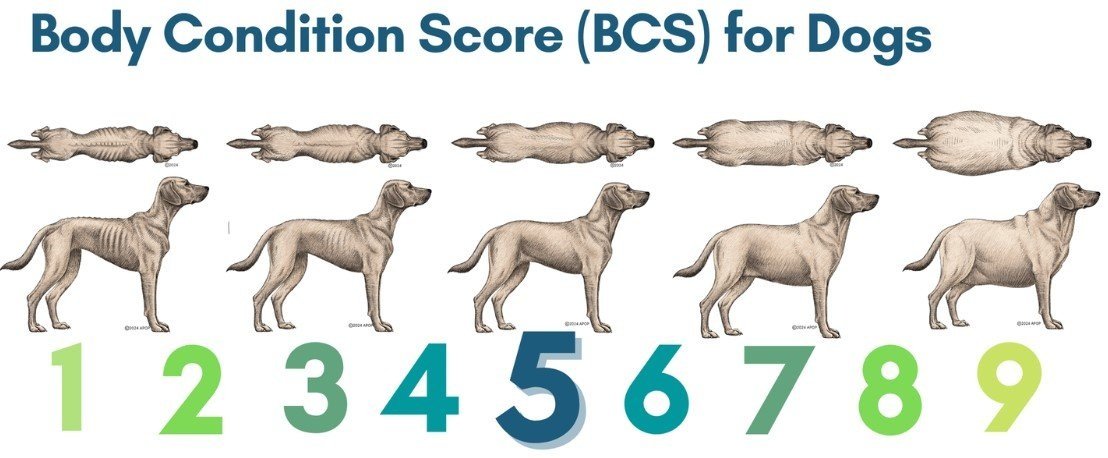5 Effective Tips to Help Your Pet Lose Weight
Body Condition Score from Association for Pet Obesity Prevention
Healthy Weight, Happy Pet: Why It Matters and How to Achieve It
Keeping your pet at a healthy weight is one of the most impactful things you can do to support a long, happy life. Studies show that dogs and cats kept at ideal body weight live significantly longer and enjoy a better quality of life. Healthy weight reduces the risk of chronic diseases—like diabetes, arthritis, and heart disease—and helps delay the onset of mobility issues as pets age.
At Fair Oaks Pet Hospital, we believe weight management should be proactive, practical, and personalized. Here's how to know if your pet is at a healthy weight—and what to do if they aren’t.
Understanding Body Condition Score (BCS)
Veterinarians use a system called the Body Condition Score to evaluate a pet’s body fat and overall weight. The most common scale ranges from 1 to 9, where:
1 = severely underweight
4–5 = ideal weight
9 = severely overweight
Here’s what to look for:
Feel the ribs: At an ideal weight, you should be able to feel (but not see) your pet’s ribs with light pressure.
Look for a waist: When viewed from above, your pet should have a visible waist behind the ribs.
Tuck-up from the side: From the side, there should be a noticeable upward tuck in the belly.
Helping Your Pet Lose Weight: Practical Tips
If your pet is overweight or gaining weight despite regular meals, here are several steps you can take:
Calculate Total Daily Calories
Tally everything your pet eats in a day—meals, treats, table scraps, and supplements. Then, decrease that total by 10–20% to promote safe, gradual weight loss.
Account for Treats
If you use treats frequently (for training, enrichment, etc.), subtract those calories from your pet’s regular meals. Even “healthy” treats can add up quickly.
Check Calories per Cup
Pet food labels can be misleading. Words like “light” or “weight control” don’t always mean lower calorie. Always check the kcal per cup to ensure you're choosing a truly lower-calorie food.
Visit Your Vet
Some medical conditions can make it harder for pets to lose weight. If you’ve been consistent with a weight loss plan but aren’t seeing progress, talk to your veterinarian about testing for an underlying issue.
Consider a Prescription Diet
In some cases, switching to a veterinary-prescribed weight loss diet can make a big difference. These diets are designed to be filling while still promoting fat loss, and they often include important nutrients to support metabolism and joint health.
Every Pet Is Different—Let’s Build a Plan That Works
Weight loss isn’t one-size-fits-all. Your pet’s age, activity level, medical history, and personality all affect the best approach. That’s why we work with you to create a custom plan that fits your family’s lifestyle and keeps your pet feeling their best.

